Top 7... Games that were originally totally different games
Your favorite game was originally a licensed Smurfs RPG
The secret past of your favorite games
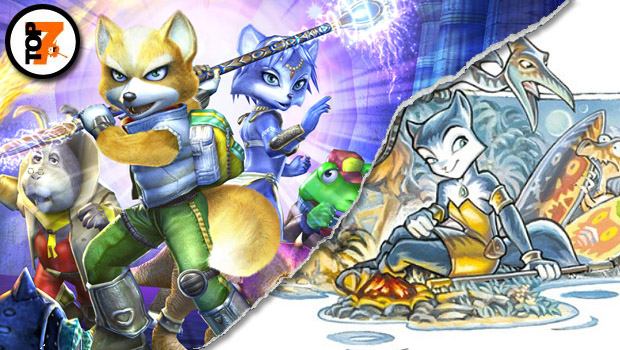
Games can go through vast transformations between the time they're conceived and released. Usually, though, the game that arrives on store shelves is more or less the one the developers sought out to make when they first came up with the idea. This Top 7 is not about those games.
Instead, we're celebrating the titles that had more tumultuous development cycles--the ones that ended up totally different from what they started out as. We're looking at licensed games that became AAA blockbusters, cancelled sequels that were reworked into original IPs, and cancelled original IPs that were reworked into amazing sequels. Your favorite game might've started off as an entirely different project, and it's time we pull back the curtain on gaming's forgotten history.
7. ZombiU was first Killer Freaks from Outer Space

Nintendo first unveiled the Wii U at E3 2011, showing the world its entry into the next generation of consoles. Though few titles were actually shown off, one notable exception was Killer Freaks from Outer Space, an Ubisoft-published first-person shooter about an alien invasion of Earth. Made by Ubisoft Montpellier (who originally pitched it as an FPS where players kill Rabbids--presumably because everyone, including the developers, was tired of Rabbids), the game pit human survivors against creepy, green alien monsters. And yet, one year later, Killer Freaks was nowhere to be found at Ubisoft's booth. So what happened?
ZombiU happened, apparently. After the lukewarm reception at E3 2011, Ubisoft went back to the drawing board. The titular Killer Freaks were removed from the shooter and replaced with zombies, creating a much more serious, survival-based game. And so, the originally Rabbids-starring, then alien-starring Killer Freaks from Outer Space was mutated into one of the better, more ambitious Wii U launch titles.
6. Star Fox Adventures was Fox-less as Dinosaur Planet
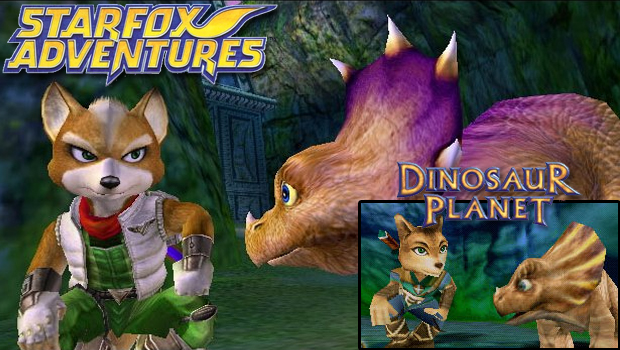
From Battletoads to Banjo Kazooie, British developer Rare was responsible for some of the biggest games of the '90s. Some of its most popular titles, though, were the ones it made with Nintendo characters--Rare was one of the very few western developers that Nintendo allowed access to its coveted roster of icons. Despite this, the GameCube release of Star Fox Adventures was not originally a Star Fox game at all--in fact, it was originally a Nintendo 64 game by the name of Dinosaur Planet that had absolutely nothing to do with Fox McCloud.
Dinosaur Planet starred Sabre, a fox that, while looking a lot like Nintendo's Fox, was actually meant to be a totally unconnected fox. Nintendo's Shigeru Miyamoto met with Rare and noted the similarities between the two franchises' characters, and suggested reaching a middle ground. It was decided that the two IPs would be smushed together, creating Star Fox Adventures: Dinosaur Planet, a GameCube game that would ultimately serve as the last one Rare would develop under Nintendo's wing.
5. Halo was a third-person shooter and an RTS (On Mac)
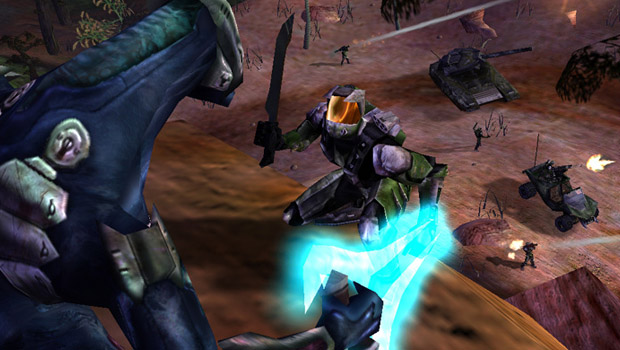
Halo is to Microsoft as Mario is to Nintendo as Mickey Mouse is to Disney--that's how it has been since Halo: Combat Evolved released on the original Xbox in 2001. The innovative shooter was immensely popular, and arguably responsible for the success of the Xbox in America, as well as the future success of the first-person shooter genre on consoles. But there was a time, only two years prior to the game's release, when Halo was a far different game on a totally different system.
Weekly digests, tales from the communities you love, and more
Bungie originally hitched its wagon not to Microsoft, but to Apple, and was planning on releasing Halo as a third-person shooter for the Mac. Sounds crazy, doesn't it? But it's true--you can even watch Steve Jobs introduce Bungie co-founder Jason Jones at 1999's Macworld. And before it was a third-person shooter, Halo was even more removed from the game that dazzled Xbox owners; Bungie had originally planned for it to be a real-time strategy title (as seen in this early video).
4. Doom was conceived as a licensed Aliens game
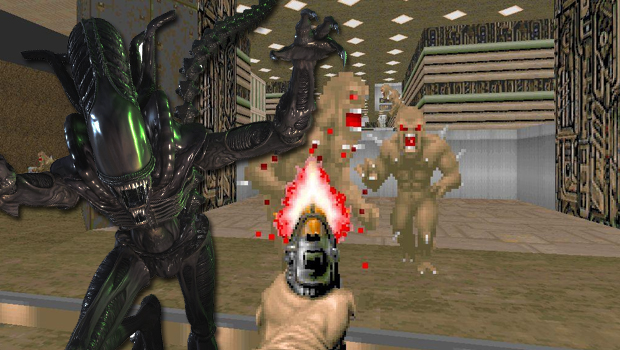
Though Wolfenstein 3D was big, it wasn't until id Software released Doom that the FPS had truly arrived. It was a huge hit, thanks in no small part to its incredible graphics and original, unique setting. Fighting demons on Mars? Who would've thought of that? What a weird, weird idea.
But it isn't nearly as strange when you consider what Doom was before it was Doom. Early in the game's development, id was in talks with 20th Century Fox to make a shooter based on the team's favorite sci-fi film: Aliens. Suddenly, the concept of fighting weird creatures on a foreign planet doesn't seem so strange--in fact, that's literally the plot of the entire franchise. That deal eventually fell through, so Doom went back to the drawing board... and ended up being pretty much the same game, except, you know, more red.
3. Dead Space was original a System Shock sequel
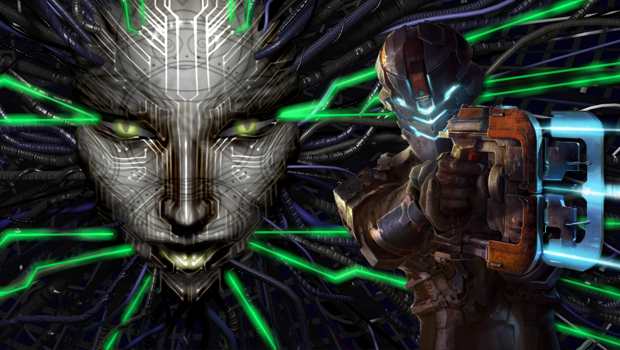
Far, far away there exists an enigmatic mausoleum filled with monsters, and the only evidence of what happened is in audio logs scattered around the world. This narrative could, realistically, describe three different games: System Shock, BioShock, or Dead Space. While it's well-established that BioShock was made as a spiritual successor to System Shock, a lesser-known fact is that Dead Space was, at one point, supposed to be an actual sequel to Looking Glass Games' 1999 sci-fi shooter.
In 2006, EAs Redwood Shores studio was rumored to be working on System Shock 3, but after the publisher found that it couldn't legally publish the game (they owned the name, not the development rights), the team was forced to make an original IP instead. So they went back to work and made Dead Space, a game that takes place far, far away, in an enigmatic mausoleum filled with monsters. Oh, wait.
2. Devil May Cry started off as Resident Evil 4
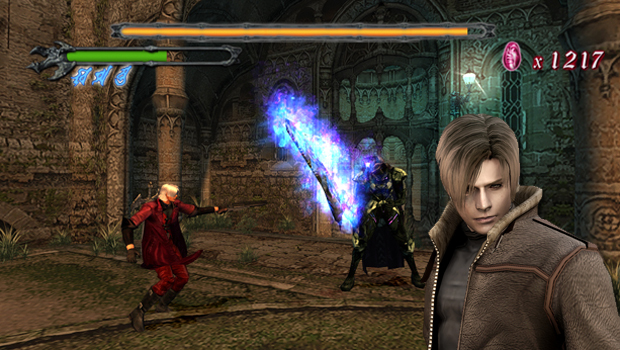
Resident Evil was shambling towards stagnation in the late '90s. Though sales of it were strong, Capcom wanted to create something more original for the fourth installment of the incredibly popular franchise. So director Hideki Kamiya set out to turn RE into a stylish action game, ditching the slow, plodding pace of the previous games in favor of a new, superhuman hero. Eventually, however, it was decided that this simply didn't fit within the RE universe. Kamiya's action game was just too cool for Resident Evil.
But know what it was cool enough for? The mother-freaking son of Sparda. Kamiya's team rewrote the story, taking out all of the Resident Evil ties and refocusing it in a new universe. Here, a white-haired monster killer named Dante slashed apart hordes of demons and occasionally stopped for a slice of pizza. From the ashes of Resident Evil 4, Devil May Cry was born--turns out, people enjoyed the freedom that came from ditching traditional tank controls.
1. Donkey Kong was supposed to be a Popeye game

Master Chief is pretty popular. Kratos? Sure--people love that guy. And even at his worst, Sonic the Hedgehog has legions of fans. But none of these icons have anything on Mario. From his humble beginnings as "Jumpman" in Nintendo's Donkey Kong, the plumber has billions in game sales under his belt. He's had his own television show, his own cereal, and even his own Hollywood movie. And guess what? He almost didn't exist.
If young game designer Shigeru Miyamoto had gotten his way, Donkey Kong would've been Bluto, Pauline would've been Olive Oyl, and Mario would've been Popeye. Yup, Donkey Kong--one of the most important video games ever made--was almost a licensed Popeye game. That deal fell through, and Miyamoto had to create his own characters. In other words, gaming's greatest mascot is essentially a Popeye stand-in. There's a happy ending to this story, though, besides the advent of an industry icon: Miyamoto was able to eventually make his Popeye game. Dreams do come true, people. Dreams do come true.
Bonus: Sleeping Dogs was Black Lotus, and then True Crime

According to the developers, Sleeping Dogs didn't change much over the course of its lengthy development cycle, but the story behind the game is too good to ignore. Soon after developer United Front Games was formed, it began work on a new, original IP. Black Lotus, as it was called, was set in Hong Kong, and starred an undercover female cop (reportedly modeled after Lucy Liu). Activision wasn't comfortable with spending so much on an original IP starring a woman, though, so it had the developer affix a penis onto the star and position it as True Crime: Hong Kong, a reboot of the True Crime series.
The end? Not by a long shot. Activision cancelled the game in 2011, arguing that "only top-tier games can be competitive in today's market." But True Cri--erm, Black Lotus wasn't dead yet. Square Enix saw potential, and published it a year later as Sleeping Dogs. Weirdest part? United Front Games says little was modified during this flip-flopping development cycle--well, besides the hero getting a sex change, that is.
The games, they are a-changin'
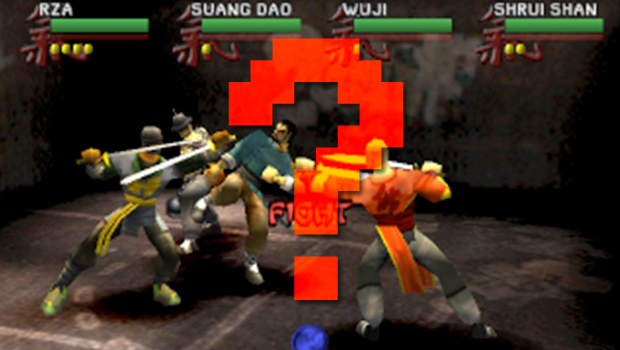
There are many, many other examples of games going through crazy transformations before their launch. It's Mr. Pants was supposed to be a Donkey Kong game, and there's even some rumblings that 50 Cent: Blood on the Sand wasn't originally going to star rapper 50 Cent. Crazy, right? And these are just the ones we know of; surely there are plenty of other tales that have yet to reach the light of day. One day, maybe we'll know the truth.
And if you're looking for more, check out top 7 cancelled games we wish we could play and the top 7 games we really hope aren't cancelled.
Hollander Cooper was the Lead Features Editor of GamesRadar+ between 2011 and 2014. After that lengthy stint managing GR's editorial calendar he moved behind the curtain and into the video game industry itself, working as social media manager for EA and as a communications lead at Riot Games. Hollander is currently stationed at Apple as an organic social lead for the App Store and Apple Arcade.



